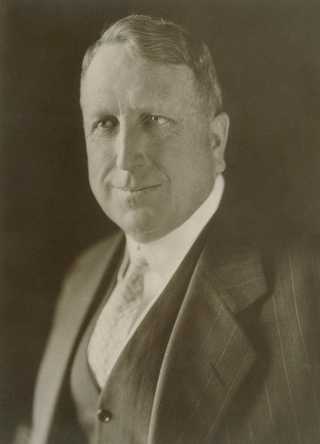Hearst and WWI
1914 - On Feb. 17, the Hearst-Selig News Pictorial began the first American weekly newsreel edition, in partnership with William Selig of the Chicago Tribune and with news supplied by Hearst's International News Service. Starting June 8, Pathe offered a daily newsreel service, the Pathe Daily News, that used nonflammable safety film stock rather than nitrate and could be safely sent through the mail. But when WWI began, the film stock could no longer be obtained from Europe, and the daily service ended. The Hearst-Selig News Pictorial made a film of the ruins of the Belgian city of Louvain in August or Sept. 1914, shown in the U.S. in Oct. 1914, one of the few films not faked of the early war.
1914 - He opposed U.S. entry into WWI and was widely hated. He praised Bryan's resignation from Wilson's cabinet over the Lusitania notes; Hearst and Robert McCormick's Chicago Tribune were critical of England's blockade as well as German's submarine; he was prohibited by England from using its cable service, sent his own reporters to Germany who reported by radio to the Sayville, Long Island, radio station. William Bayard Hale sent cables for INS, and Nelson Edwards sent motion pictures from Germany.
1915 - On Oct. 29, Hearst and Vitagraph signed a deal to release the Hearst-Vitagraph News Pictorial newsreel beginning in 1916, and released exclusive films of the sinking of the British battleship Audacious that had been made in late 1914 and of the German warship Blucher made in early 1915. The Hearst press had published dramatic photos of the SS Audacious in 1914, forcing the British government to finally admit the disaster. The photos had been taken by a tourist from a nearby ocean liner Olympia off the north coast of Ireland, and obtained by George Allison of Hearst's International News Service in London.
1915 - In the last episode of the 1915 Perils of Pauline series, The Romance of Elaine, Elaine fought against Marius Del Mar, played by Lionel Barrymore, a villain trying to destroy America's coastal defenses. This was Hearst's first war film. In 1916, he filmed his second war serial, Patria, starring Irene Castle, released in 1917 to influence public opinion, not just entertain. Mexico and Japan were portrayed as threats to America because they were trying to start a fifth-column revolt in America.
1915 - In December, Hearst and Edgar B. Hatrick sent their own cameraman to Germany, Nelson E. Edwards, who took pictures from behind German lines. Hearst wrote for help from Count Johann Heinrich von Bernsdorff, German ambassador in DC, who was a friend of many publishers and was having an affair with Cissy Patterson, whose family owned the Chicago Tribune.
1916 - In March, Hearst sent a cameraman to travel with Pershing and his expedition in search of Pancho Villa. Hearst wanted armed intervention in Mexico and in the Phillipines, but neutrality in Europe. The Bureau of Investigation, predecessor of FBI, suspected Hearst of supplying arms to counterrevolutionaries in Mexico, but found no evidence.
1916 - In October, Hearst's INS was barred from sending news dispatches from England due to his anti-British editorials. He turned to Germany for war coverage. William Bayard Hale made arangements for INS dispatches to be transmitted by wireless from Nauheim in Germany to Sayville, Long island. Germany also provided Hearst with motion pictures for his newsreels. This footage was used in the Hearst-Selig documentary, History of the World's Greatest War in Motion.
1917 - On Jan. 10, Hearst joined with Pathe for the Hearst-Pathe News that lasted one year. Since 1916, Hearst had released his own newsreel, The International Weekly, and in 1918, he began The International Newsreel (the first time the term "newsreel" was used in a name) and released it through Universal.
1917 - When the U.S. entered World War I, the Committee for Public Information, or CPI, produced its own newsreel titled the Official War Review. Hearst sent his favorite cameraman, Joe Hubbell, to Europe to help make films for the Review, worked closely with the Signal Corps, was the first to Neufchateau. Hearst film was used to make America's Answer in 1918. Controversy developed over the favoritism by CPI to Hearst and Pathe.
